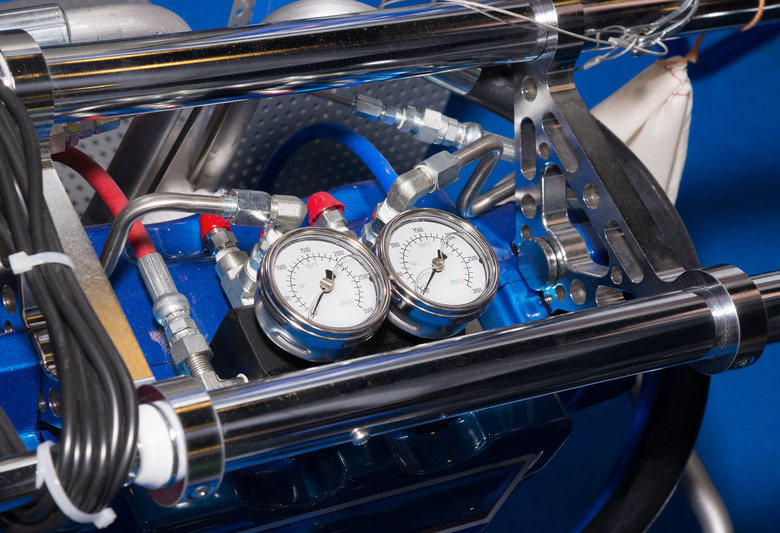Advantages & Disadvantages Of Pneumatic Systems
A pneumatic system with a leak anywhere in it won't function at all, but when a project requires a large amount of power in a small space, pneumatic systems offer a distinct advantage over some other options. Air compressors, some shock absorbers, some solenoid valves and the air-brake system in that semi-truck passing you on the freeway, all employ pneumatic systems to function.
TL;DR (Too Long; Didn't Read)
Advantages of pneumatic systems:
* Inexpensive
* Clean
* Safe and easy to operate
Disadvantages:
* Lack precision controls
* Sensitive to vibrations
* Loud and noisy
Two-Stage System
Two-Stage System
Pneumatic systems utilize air or gas pressure to operate objects that require a large amount of power in a small space. Most pneumatic systems consist of two stages: air storage and air operation. Storing air requires the system to maintain pressures greater than the air passing through the system for use. A leak anywhere in the system makes a pneumatic system unusable. A pneumatic system requires the constant delivery of air at a set pressure identified by a static air pressure gauge or a portable one you fit over a valve.
A Closed System
A Closed System
The tires on your car operate by use of air pressure. Though not a system unto itself, tires get filled with air by an air compressor, a pneumatic system. A small motor builds up air pressure in a storage unit that you release when you fit the nozzle of the air hose onto the valve of the tire and press the lever. Pneumatic systems require a closed system to function properly. If the nozzle does not fit securely onto the tire valve, the tire does not get filled with air.
Cost Effective, Safe and Clean
Cost Effective, Safe and Clean
Since the main ingredient in the pneumatic system is air, which exists abundantly, you do not need a source to purchase it, as most pneumatic systems pull air right from the atmosphere. The beauty of a pneumatic system is that if it leaks, it does not contaminate or affect the environment or atmosphere, reducing the safety hazards of using such a system. Most of the parts inside a pneumatic system consist of affordable materials such as zinc, plastics and aluminum. All of these materials are available and inexpensive, making them a cost-effective system. Pressurized air systems require limited cleaning because air is their power source, and nothing else can get inside the sealed system.
Loud, Leaks and Water
Loud, Leaks and Water
Control and speed in pneumatic systems are more difficult because of the compressed air than compared with electrical or hydraulic systems. If for instance, a device requires a specific speed, you might have to add more equipment to the pneumatic system to make it work at the desired levels. If water gets inside a pneumatic system through a leak, the entire system can freeze up. Air hoses attached to pneumatic systems pose a safety hazard if they get lose with the nozzle open. Pneumatic systems are sensitive to any intrusion by water and are sensitive to vibrations and changing temperatures. And the major drawback is they're loud.
Cite This Article
MLA
Brenner, Laurie. "Advantages & Disadvantages Of Pneumatic Systems" sciencing.com, https://www.sciencing.com/advantages-disadvantages-pneumatic-systems-7594256/. 17 April 2018.
APA
Brenner, Laurie. (2018, April 17). Advantages & Disadvantages Of Pneumatic Systems. sciencing.com. Retrieved from https://www.sciencing.com/advantages-disadvantages-pneumatic-systems-7594256/
Chicago
Brenner, Laurie. Advantages & Disadvantages Of Pneumatic Systems last modified August 30, 2022. https://www.sciencing.com/advantages-disadvantages-pneumatic-systems-7594256/
